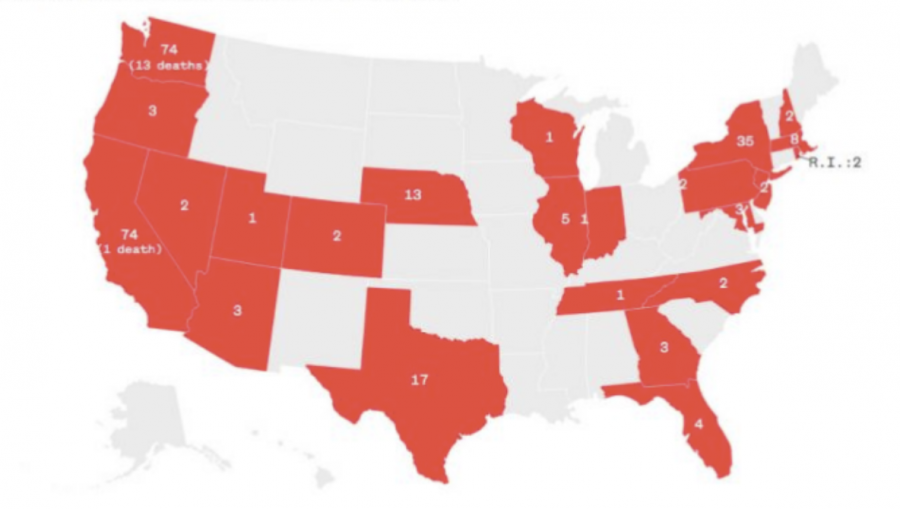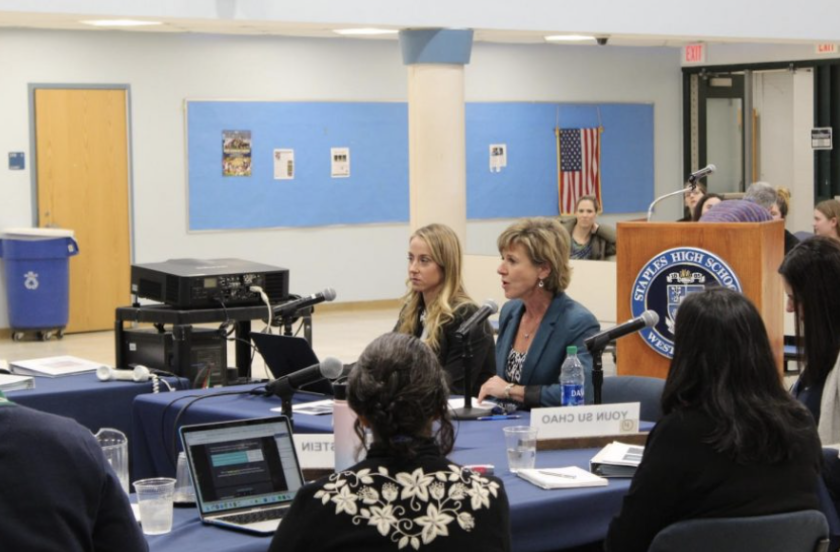“It might be different if we were in, say, Podunk, Ark. But this is Westport, and the amount of money that people are willing to pay is not chicken feed. It’s a big business,” said Alan Jolley, a math teacher at Staples.
The business to which Jolley refers is tutoring—namely teachers who tutor, in addition to teaching a full slate of classes.
According to a master list of teachers who are eligible and registered to tutor released by the Staples guidance department, 93 Staples teachers are registered to tutor. When taken as a percentage of all teachers listed, teachers who are registered to tutor comprise nearly 51 percent.
With over half of Staples’ faculty registered to tutor, some believe that the practice has become a cultural staple at Staples and as such is accompanied by both its advocates and its critics.
“It seems as though everyone I know has a tutor for something. And more often than not, the tutor in question is a teacher,” said Henri Rizack ’14.
Some individuals who have received tutoring from faculty, including Andrew Felman ’14, believe that this manner of tutoring is effective because teachers are highly knowledgeable in regards to the academic curriculum in ways that ordinary tutors are not.
“There’s a benefit to being taught by a teacher who knows and understands the topic. They don’t just understand the material…they understand the way that it is presented at Staples,” Felman said.
Felman’s sentiments are reinforced from the perspective of a teacher. According to Michael Fulton, an English teacher who tutors in writing, tutoring between faculty and students is advantageous because of “a general knowledge of what a particular class or teacher expects from the student.”
ONE TEACHER’S STORY
During the school day, Joel Kabak teaches AP Biology. But occasionally, after school and on the weekends, he tutors in chemistry and physics, usually three or four students in any given school year
According to Kabak, the value of tutoring in some scenarios is largely organizational.
“It’s feasible to get a lot accomplished in an hour when you’re not using a phone nor have other distractions. And that’s what tutoring can do—remove the distractions,” Kabak said.
Additionally, Kabak believes that tutoring can provide an environment in which a student is more comfortable asking questions about what he or she doesn’t understand, which furthers progress in the classroom.
“The so-called ‘dumb questions’ that a student might be afraid to ask during class can come out during a one-on-one tutoring session and more openly show topics that need to be reinforced,” Kabak said.
However, Kabak also noted an instance in which a student did not need help with the course, and in his first tutoring session, was performing as if he did not need help.
Kabak did not find the need to continue tutoring the student, and the student eventually scored an “A” in the course without any additional help.
Kabak’s anecdote raises an important question: how much of tutoring is driven by academic need, and how much is rooted in the norms of local culture?
CULTURE & PRICE
According to Kabak, the frequency with which Staples students seek out tutoring help, including that from teachers, is largely driven by a school and town environment that prizes immense amounts of time spent by students in extracurricular activities, which, when taken to the extreme, inhibits academic growth.
“The whole tutoring business is a result of students being shuffled away into extracurriculars, varsity sports in particular, because some athletes literally don’t have enough hours in the day to complete their work, and need to constantly play catch-up at school,” Kabak said.
Jolley suggests an alternate theory: that the local environment in Westport is highly conducive to the tutoring business.
“There’s simply no stigma associated with tutoring in Westport. Somewhere else in the country, a student might be thought of as less intelligent by his peers for seeking tutoring. I tutored one student in calculus over the summer in order to advance her before the school year started. Around here, tutoring is just the norm,” Jolley said.
Although the reasons for why teacher-to-student tutoring is prevalent are disputed, the economic cost is not. While no teacher would give an hourly rate, three teachers confirmed anonymously that their rates exceed $100 per hour.
Yet Stacy Delmhorst, who teaches math at Staples, believes that there is also a significant cost exacted upon teachers who tutor.
“My first priority, without exception, is always to my students in the classroom. With tutoring on top of that responsibility, there have been several instances in which I have missed time with my family to tutor. Tutoring on a regular schedule requires a significant amount of sacrifice on the part of the teacher,” Delmhorst said.
THE GRAY AREA &
THE BIG PICTURE
However, some make the argument that there are additional ethical questions in regards to faculty-to-student tutoring besides the financial cost.
“I wish I had the money available to hire a teacher to help me get through classwork,” said one student, who requested anonymity.
The student also questions whether teachers who tutor could, for example, ask other teachers for answers on tests and then give them to students.
According to Principal John Dodig, the answer to the student’s question is one of confidence in the integrity of the faculty.
“The possibility for conspiracy certainly exists. But I’d really like to think that we have moral, ethical people working at Staples, at least to the point where something so blatantly illegal would never occur,” Dodig said.
Article 38 of the Westport Teachers’ Contract states that “teachers are prohibited from tutoring, for compensation, students who are in their classes during the school year or the summer before or after they are in their classes.”
However, James D’Amico, social studies department chair, believes that there are some less obvious, but still inherent, flaws in the manner in which some people view the prospect of tutoring as a means to success.
According to D’Amico, an attitude of “money being able to buy grades” exists among some people and undermines true understanding.
In looking at the issues, conflicts, and motivations surrounding teachers and tutoring, Kabak believes that it’s all part of the job.
“There’s a lot of gray area in tutoring, and I recognize that. It takes a certain type of teacher to want to tutor,” Kabak said.” But in the end, it is truly a profound decision that rests with the individual.”



















































